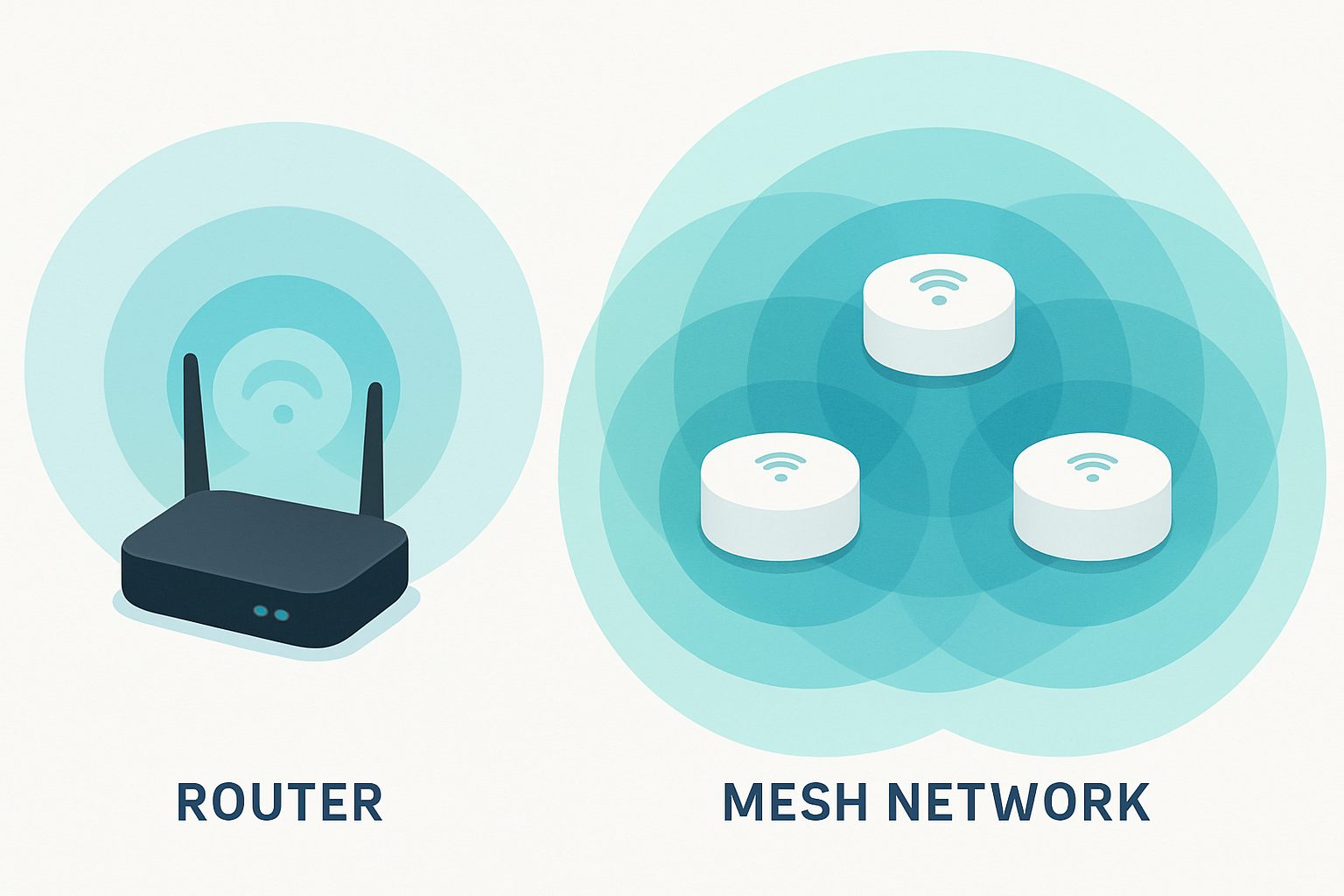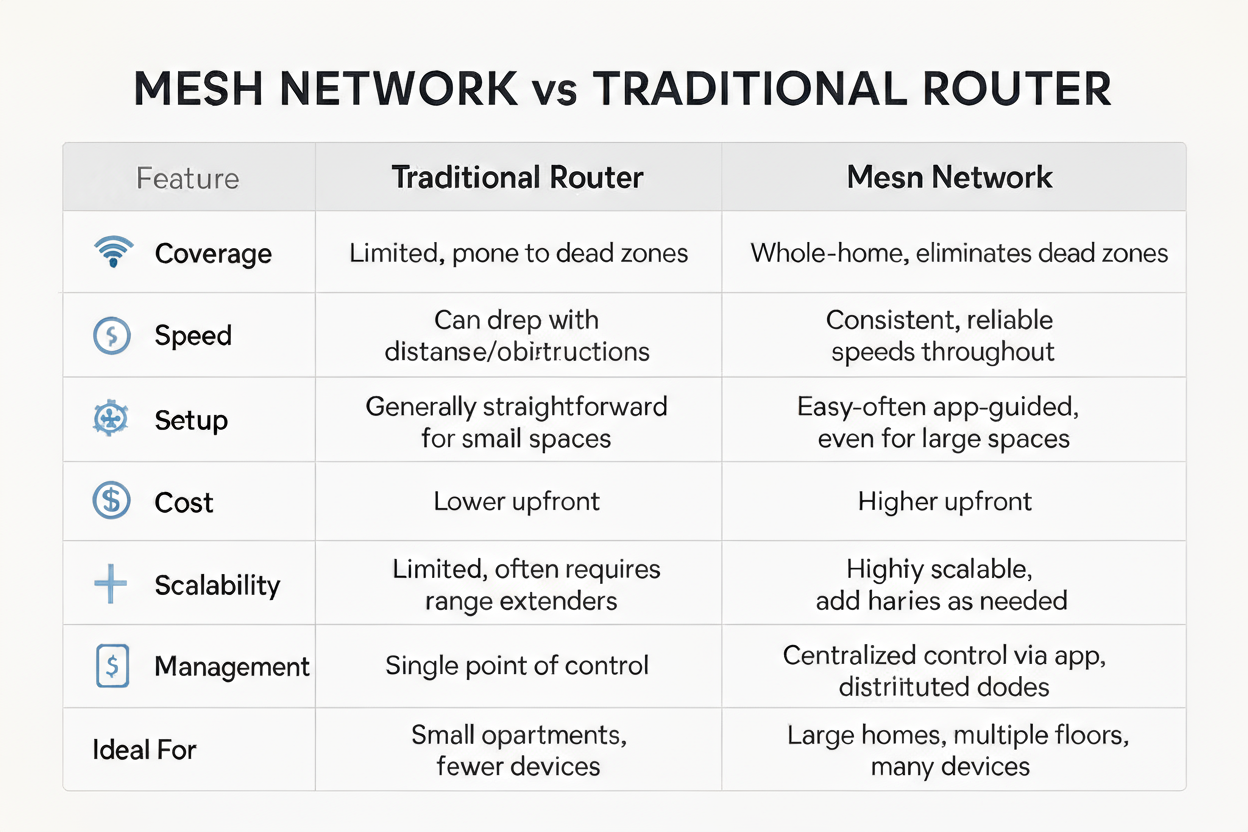
Hey there, fellow internet explorer! Ever feel like your Wi-Fi signal is playing hide-and-seek in your own home? You’re not alone.
Many of us struggle with dead zones, slow speeds, and unreliable connections, especially in larger homes or those with tricky layouts.
When it comes to setting up your home network, two main contenders usually come to mind: the traditional router and the newer mesh Wi-Fi system.
But what’s the real difference, and more importantly, which one is the best fit for your needs?
Let’s dive in and demystify the world of home networking!

Videos are added as random thoughts 💭 💭 💭
The Traditional Router: Your Familiar Internet Hub
For years, the traditional wireless router has been the backbone of our home internet.
It’s that single device, usually with a few antennas, that connects directly to your modem and broadcasts a Wi-Fi signal throughout your home.
Think of it as a central command center for your internet [1].
How it Works
A traditional router takes the internet connection from your modem and distributes it to all your Wi-Fi-enabled devices—laptops, smartphones, smart TVs, and more.
It creates a single wireless network (SSID) that all your devices connect to.
The signal strength and coverage depend heavily on the router’s power, its placement in your home, and any physical obstructions like walls or furniture.
Pros of Traditional Routers
Cost-Effective: Generally, traditional routers are less expensive upfront compared to mesh systems.
Simplicity: For smaller homes or apartments, a single router is often all you need, making setup straightforward.
Direct Control: You have a single point of control for all your network settings.
Cons of Traditional Routers
Limited Coverage: The biggest drawback is often signal degradation and dead zones in larger homes or multi-story buildings. The further you are from the router, the weaker the signal.
Speed Drops: As the signal weakens, so does your internet speed, leading to buffering and frustration.
Congestion: In homes with many devices, a single router can become a bottleneck, especially if multiple devices are streaming or gaming simultaneously.
The Mesh Network: A Distributed Approach to Wi-Fi

Imagine a team of Wi-Fi devices working together to blanket your entire home with a strong, seamless signal.
That’s essentially what a mesh network does.
Instead of a single router, a mesh system consists of a main router connected to your modem and several satellite nodes (or points) placed strategically around your home [2].
How it Works
These nodes communicate with each other to create a single, unified Wi-Fi network.
Your devices automatically connect to the node with the strongest signal as you move around your home, ensuring a consistent and reliable connection.
It’s like having multiple Wi-Fi hotspots that all share the same network name, so you never have to manually switch between them.
Pros of Mesh Networks
Whole-Home Coverage: Mesh systems excel at eliminating dead zones and providing strong Wi-Fi coverage in every corner of your home, regardless of size or layout.
Seamless Roaming: As you move from room to room, your devices automatically switch to the nearest node without interrupting your connection.
Scalability: You can easily expand your network by adding more nodes if you find new areas that need coverage.
Improved Performance: With multiple nodes distributing the load, mesh networks can often handle more devices and higher bandwidth demands without significant speed drops.
Easy Setup and Management: Many mesh systems are designed for easy setup through a mobile app, making them user-friendly even for those who aren’t tech-savvy.
Cons of Mesh Networks
Higher Cost: Mesh systems are generally more expensive than traditional routers, especially for larger setups.
Potential for Overlap: If nodes are placed too close together, they can interfere with each other, though most systems have built-in optimization to prevent this.
Less Control for Advanced Users: While easy to use, some advanced users might find the simplified controls of mesh systems less customizable than traditional routers.
Mesh Network vs. Traditional Router: A Quick Comparison

Which One is Right for You?
The choice between a mesh network and a traditional router ultimately depends on your specific needs and living situation.
Here’s a quick guide to help you decide:
Choose a Traditional Router if:
You live in a small apartment or a single-story home with good Wi-Fi coverage from a single point.
You have a limited budget.
You don’t have many devices connected to your Wi-Fi.
You’re comfortable with basic network setup and troubleshooting.
Choose a Mesh Network if:
You live in a large home, multi-story house, or a home with many walls and obstructions.
You experience dead zones or inconsistent Wi-Fi signals in certain areas.
You have a smart home with many connected devices (smart lights, thermostats, security cameras, etc.).
You want seamless Wi-Fi coverage and don’t want to manually switch networks as you move around.
You’re willing to invest a bit more for a premium Wi-Fi experience.
The Verdict
Both traditional routers and mesh networks have their place in the world of home internet.
While traditional routers are still a solid choice for smaller spaces and basic needs,
mesh networks are rapidly becoming the go-to solution for larger homes and those seeking ubiquitous, high-performance Wi-Fi.
Investing in a mesh system can transform your internet experience, turning those frustrating dead zones into areas of seamless connectivity.
Ultimately, the best choice is the one that provides you with the most reliable and efficient internet experience for your unique home environment.
Happy surfing!
